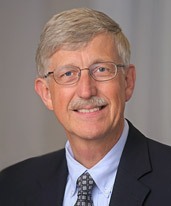The National Institutes of Health (NIH), a part of the U.S. Department of Health and Human Services (HHS), is the nation’s medical research agency—making important discoveries that improve health and save lives.
NIH is the largest source of funding for medical research in the world, creating hundreds of thousands of high-quality jobs by funding thousands of scientists in universities and research institutions in every state across America and around the globe.
Based in Bethesda, Maryland, NIH also has Institutes, Centers, and offices in Arizona, Maryland, Massachusetts, Michigan, Montana, and North Carolina.
27 Institutes and Centers
the Office of AIDS Research and the Office of Research on Women's Health, among others.
18,000+ Employees
The National Institutes of Health (NIH) understands that equity, diversity and inclusion are critical scientific imperatives which allow NIH to achieve the mission of advancing the public health of our Nation. Accordingly, there is a deep commitment by the NIH to advance diversity and inclusion and to ensure that the civil rights of all of our employees are protected and honored. Throughout the years, the Office of Equity, Diversity and Inclusion (EDI) has worked diligently with critical stakeholders to advance the NIH in this arena. In addition, there are a variety of offices, working groups, committees and affinity groups that have been established which reflect this deep NIH commitment to foster a work environment where equal employment opportunity is a reality for all NIH employees and to ensure that diversity and inclusion are woven into the fabric of the NIH for the benefit of fostering creative and innovative discoveries that advance biomedical research.
NIH is made up of 27 Institutes and Centers (ICs), each with a specific research agenda, often focusing on particular diseases or body systems. NIH leadership plays an active role in shaping the agency's research planning, activities, and outlook.
The NIH Office of the Director (OD) is the central office at NIH for its 27 ICs. The OD is responsible for setting policy for NIH and for planning, managing, and coordinating the programs and activities of all the NIH components. OD's program offices include
“Our Nation derives from strength from the diversity of its population and from its commitment to equal opportunity for all. We are at our best when we draw on the talents of all parts of our society, and our greatest accomplishments are achieved when diverse perspectives are brought to bear to overcome our greatest challenges.”
President Obama
2,500 Universities & Research Institutions
More than 80% of the NIH's budget goes to more than 300,000 research personnel at over 2,500 universities and research institutions. In addition, about 6,000 scientists work in NIH’s own Intramural Research laboratories, most of which are on the NIH main campus in Bethesda, Maryland. The main campus is also home to the NIH Clinical Center, the largest hospital in the world totally dedicated to clinical research.
NIH Director - Francis S. Collins, M.D., Ph.D.

On August 17, 2009, Dr. Francis S. Collins became the Director of the National Institutes of Health. Read Dr. Collins' bio sketch.
The NIH Director plays an active role in shaping the agency's activities and outlook. The Director has a unique and critical perspective on the whole of the NIH. He is responsible for providing leadership to the Institutes and for constantly identifying needs and opportunities, especially for efforts that involve multiple Institutes. Read more about the role of the NIH Director.
85 Nobel Prizes
For over a century, NIH scientists have paved the way for important discoveries that improve health and save lives. In fact, 144 Nobel Prize winners have received support from NIH. Their studies have led to the development of MRI, understanding of how viruses can cause cancer, insights into cholesterol control, and knowledge of how our brain processes visual information, among dozens of other advances. Read more about NIH history.




